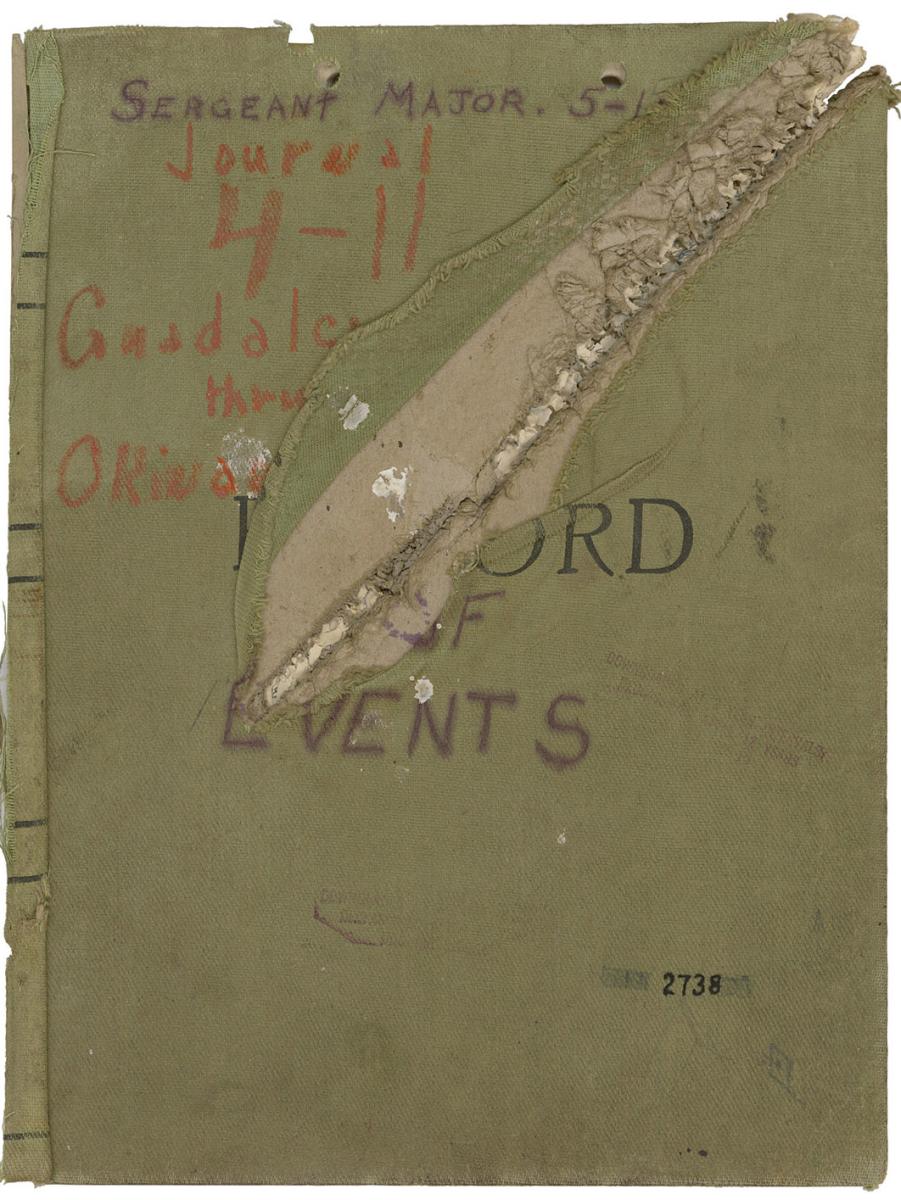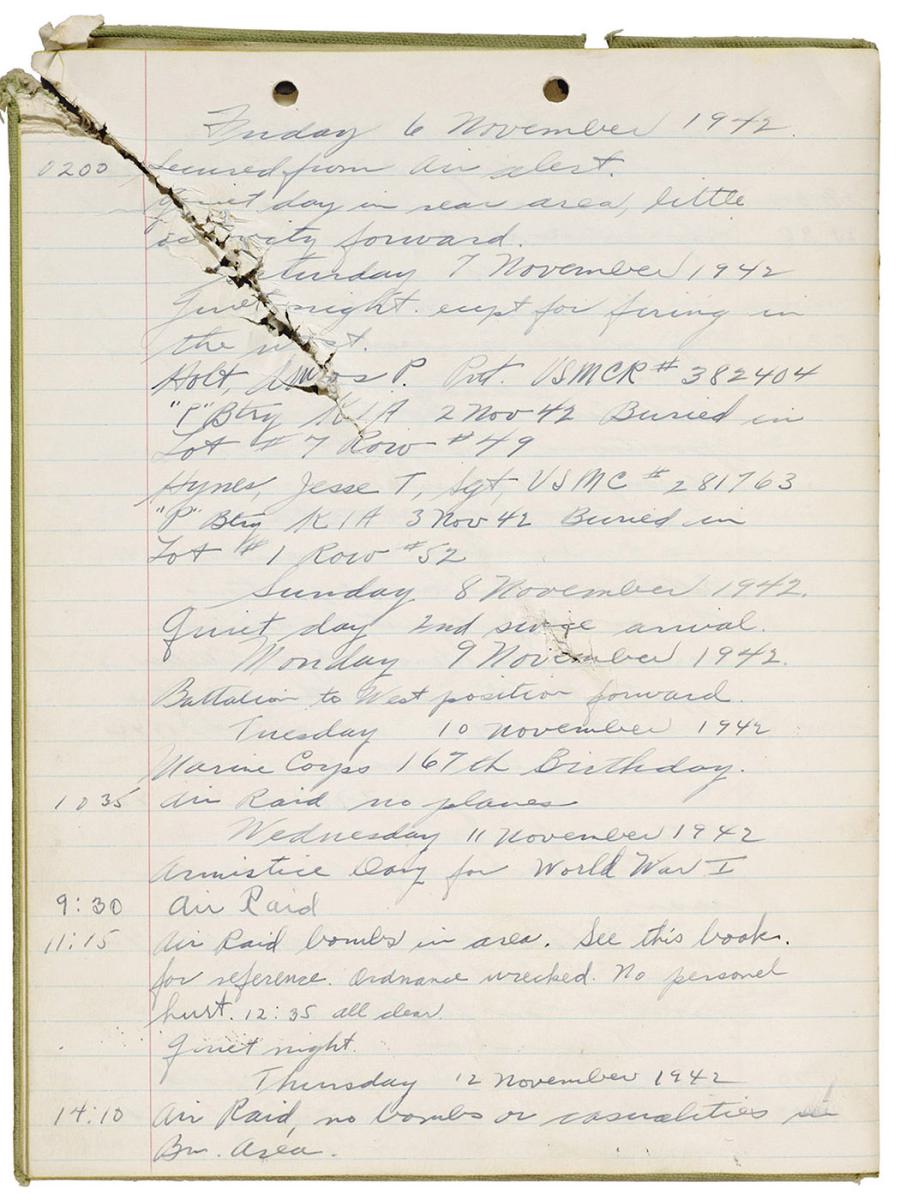
Guadalcanal Record of Events
Summer 2007, Vol. 39, No. 2 | Pieces of History
On August 7, 1942, the newly formed First Marine Division landed on the jungle island of Guadalcanal in the British Solomon Islands. This action marked the start of the first U.S. ground counteroffensive against Japanese forces in the South Pacific.
The fairly small number of Japanese troops on the island were in the process of establishing an airfield that would become the center of action for the next several months. The bloody campaign for control of Guadalcanal would last until the beginning of 1943, when Japanese forces finally withdrew from the island.
Once ashore, the Marines occupied the partially completed airstrip, which was soon completed and christened Henderson Field. From here, merican fliers (known as the “Cactus Air Force”) would attack Japanese forces in the Solomons.
Although Japanese forces initially were taken by surprise, they soon offered stout resistance. Beginning in October, Japanese warships and bombers regularly bombarded Henderson Field as a prelude to a counteroffensive, scheduled to commence November 14.
The Fifth Battalion, 11th Marines (5/11th Marines) helped defend the island and recorded its activities in a handwritten “record of events” or journal. The entries were written in a standard eight-by-ten-inch government ledger book with a green cloth cover.
During the morning of Armistice Day, Wednesday, November 11, more Japanese bombers appeared over Guadalcanal. The 5/11th Marines record of events reads:
9:30 Air Raid
11:15 Air Raid bombs in area. See this book for reference. Ordnance wrecked. No personel [sic] hurt. 12:15 all clear. Quiet night.
Even a cursory glance at the journal makes apparent the meaning of “See this book for reference”—a bomb fragment or piece of whirling debris gouged an eight-inch tear through the upper right corner of the ledger book, slicing through the cover and penetrating 27 pages of heavy lined paper onto which the previous five months’ entries had been recorded.
Despite the severe scar, the unit continued to use ledger, with subsequent entries simply written around the damage until April 28, 1944. By that time the unit had been redesignated 4th Battalion, 11th Marines, and was far from Guadalcanal, on Pavuvu in the Russell Islands. The next entry is dated August 25, when the unit boarded USS DuPage for practice landings in preparation for the upcoming assault on Japanese-held Cape Esperance. The location of the exercise: Guadalcanal.

